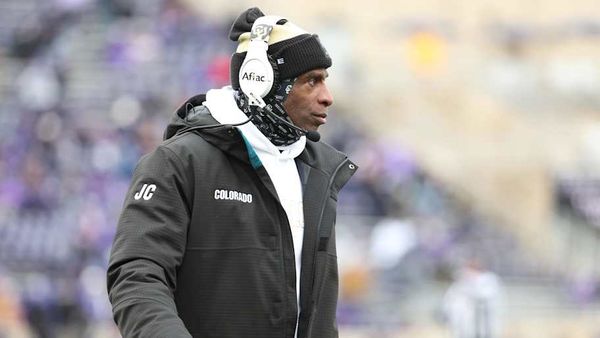There is a buzz of anticipation around Chris Kraus’ latest novel The Four Spent the Day Together, following the success of the television adaption of her postmodern feminist cult classic I Love Dick (1997).
Review: The Four Spent the Day Together – Chris Kraus (Scribe)
Kraus’ novels to this point have all been self-referential. The typical Kraus novel, as she recently explained, provides a fictionalised “case study of my life”. She writes what literary academic Mira Mattar calls “unconstrained, disobedient texts”, using “her own most immediately available raw material”.
Though Kraus resists the term “autofiction”, she is interested in testing the limits of memoir, unsettling fact and fiction to deliver provocative commentaries on contemporary American culture. Her work combines high and low cultural elements with postmodern play, drawing on influences such as philosopher Jean Baudrillard and writer Kathy Acker, about whom she has written a landmark biography.
This time, however, Kraus has added a true-crime twist, a move that changes the stakes of her novel’s biting social commentary.

New directions
The Four Spent the Day Together is arguably Kraus’s most conceptually ambitious, formally interesting, and politically charged novel to date. Written in three historically overlapping sections, spanning the 1960s to the 2020s, it pursues new directions for her writing.
The novel traces the tensions of everyday life in a declining global superpower. Its themes range from the rise of neoliberal greed, gentrification and the prison-industrial complex, to the toxic cloud of reactionary politics, censorship and cancel-culture that has settled over a twitterised America, including its literary culture.
The Four Spent the Day Together initially presents itself as the story of an artist named Catt Greene – Kraus’ fictional alter ego, who is also the author of a book called I Love Dick. Readers will recall her from Kraus’ 2012 novel Summer of Hate (where she is named Catt Dunlop).
The first section reads as a coming-of-age novel about Catt’s rebellious teenage years growing up in Milford, Connecticut.
The second section is a work of thinly veiled autofiction about the pressures of Catt’s life as a middle-aged writer married to a recovering addict.
In its final section, The Four Spent the Day Together becomes a “true-crime novel”. The move allows Catt to decentre herself, write about issues that fall well outside her usual field of vision as an artist. She sees parallels between her life and some teenagers involved in a meth-fuelled murder case.
In exposing the similarities, Kraus deftly allegorises how poverty, racism and political corruption produce cycles of inequality for working-class Americans.

Personal and political
Beginning in Milford during the turbulent 1960s, The Four Spent the Day Together adopts that era’s key slogan. It shows how “the personal is political”.
Kraus reflects on the gentrification of Brooklyn, which prices Catt’s parents out of their working-class neighbourhood. The family moves to suburban Milford, where extreme economic inequality also predominates, despite the differences from the city.
Catt’s father spends most of his days away at work in Cambridge University Press’s Manhattan office. Her mother remains at home caring for their two children, a housewife suffering from what second-wave feminist Betty Friedan called the “unspoken” problem haunting middle-class white women. Her sister Carla is struggling with a misdiagnosed developmental disability, which the precocious Catt openly resents, leading her to act out.
Swept up in her generation’s spirit of rebelliousness, Catt becomes involved in the counterculture of sit-ins, drugs, motorcycles and radical politics.
The novel then lurches forward in time to focus on Catt’s career as a writer and creative-writing professor, and on her relationships. Politics again rears its head in the characters’ everyday lives. Catt and her first husband, an older French philosophy professor (a principal character in I Love Dick), protest against George W. Bush and Dick Cheney’s infernal war in the Middle East and the reign of “antiterrorist” terror – one agenda of which was to crush political dissent by policing antiwar protesters.
Political solidarity draws Catt to her second husband Paul Garcia (who also appears in Summer of Hate). Paul has served a trumped-up three-year prison sentence following a drug-fuelled crime spree, in which he stole $900 from a corporation Cheney had invested in. Catt and her first husband sponsor Paul to undertake a psychology degree, as he struggles to turn his life around.

As Catt’s open marriage withers, she and Paul purchase a vacation house in rural Balsam, Minnesota: the land of Bob Dylan’s North Country Blues. Catt hopes to secure a creative retreat from the bustle of Los Angeles. Paul seeks a refuge from the difficulties of his social work in the city’s poorest, most desperate neighbourhoods.
The longer they spend in the sublimely beautiful landscape of northern Minnesota, the more they become exposed to its dark enigmas. Once an iron-ore powerhouse, the post-industrial Iron Range is now a region in decline. Clinging to myths of a lost era of prosperity, it has become a MAGA stronghold of deeply encrusted conservatism, stark economic inequalities and rampant addiction. An epidemic of methamphetamines (or “hillbilly heroin” as it was dubbed in the 2000s) has spiralled out of control.
The locale proves unhelpful to Paul’s recovery. A shift to his perspective in this section is crucial for the novel’s personalisation of politics. Paul is a working-class American from a racial minority and a mental health support worker. His life has been one of hardship. His perspective ties the book’s threads of political commentary together. A harrowing career counselling troubled youths and addicts, while struggling with his own recovery from addiction, leads him into a downward spiral: drink-driving offences, job layoffs and marital breakdown.
Crimes are like books
The novel’s final section, set in the late 2010s, finds Catt grappling with the prospect of a second divorce. At this point, she learns of a murder trial in nearby Hibbing, Minnesota. Three teenagers are accused of conspiring to murder an acquaintance while under the influence of crystal meth. Their families, law enforcement, the community, Catt, and even the suspects themselves fail to understand their motives.
Attempting to escape her personal and professional troubles, Catt becomes obsessed with the investigating the case. Rather than focus on the innocence or guilt of the accused, she studies their childhood experiences of poverty, broken homes, abuse and undiagnosed disability.

In preparing this novel, Kraus conducted over 100 interviews with individuals who were in some way connected to the crime. It is worth noting that her publisher has heavily promoted this final section, going so far as to call The Four Spent the Day Together a “true crime” novel, even though this subplot does not materialise until the final third of the book.
What is the upshot of this sudden detour into “true-crime fiction”? What are the implications of thinking about the book in this way?
“Crimes are like books,” Kraus reflected in a recent interview, in that a “crime brackets life in the same way that a novel brackets time, and within the brackets you can start to study different flows”. This can lead to “a belated understanding of the whole systemic injustice that led to the situation in the first place”.
Reading backwards from this point, we might trace how Kraus’s has plotted her personal history in a way that foreshadows the novel’s turning point.
First, she probes her family’s troubles with depression and disability, and her own youthful experiments with recreational drugs and petty crime. Then she considers the difficulties of living with a spouse who is attempting to turn his life around but is caught at every turn, stigmatised as a felon and addict within a judicial system that racially profiles him.
By refocusing the story around the lives of a group of kids before and after they commit an atrocious crime, Kraus challenges herself to “see things from the character’s point of view, not my point of view” in order to “psychically penetrate the mindscape of these kids and how they see things”. Incorporating investigative materials into a literary reconstruction of those characters and events, she explores the parallels between her history and theirs.
Post-industrial decline
What can a grisly meth-fuelled murder in northern Minnesota’s Iron Range tell us about post-industrial decline and the malaises of drug addiction, poverty and rising right-wing conservatism?
Taking a leaf out of Truman Capote’s book (specifically, his “non-fiction novel” In Cold Blood), Kraus blends journalism with autofiction to explore how these characters’ lives are contoured by historical ruptures brought about by political struggles. Catt’s investigations into what pushed three teenagers to murder an acquaintance in cold blood lead to more urgent questions regarding what has gone so terribly wrong in American life.
In a sense, Kraus is not writing a book about a crime, but about what a crime can teach us about what books do. For if books are like crimes, as she claims, then writing can be understood as means of “investigating things” by “looking a little deeper than people look in the course of an anesthetized daily life”.
“The pleasure of reading is that the writer has looked that far and is telling you things that you either didn’t know or you knew in some subliminal way,” she explains. “The function of writing is to give thoughts and feelings a voice, and to bring them forward to articulate them.”
On one level, the unexpected third section of the novel is Kraus using “true-crime fiction” to expose her culture’s inability to grapple with these sorts of issues.

A sobering allegory
Kraus’ cult following includes major contemporary writers such as Sheila Heti, Rachel Kushner and Maggie Nelson, as well as celebrities Lena Dunham and Alexa Chung. But some readers will likely not agree with all Kraus has to say. She is razor-sharp about literary critics, within a wider satire of cultural criticism in the age of social media.
Through Catt, Kraus also reflects on the strange consequences of becoming famous after the television adaptation of I Love Dick. At first, Catt is regarded as a trailblazing “older white feminist” and a forebear of the #MeToo movement. But she soon draws ire for refusing to boycott a Los Angeles artists’ collective accused of tacitly supporting the gentrification of working-class Chicano suburbs.
Kraus here turns her satirical gaze back onto privileged but unaware Ivy League students and other commentators, who picketed her speaking events at NYU when she was promoting her Acker biography.
In Summer of Hate, she wrote about her experiences investing in and restoring dilapidated apartment complexes in the 2000s. The project aimed at increasing decent and affordable housing for low-income families.
In The Four Spent the Day Together, Catt (like Kraus) finds herself likened to coldblooded property investors like the Trump family – “slumlords” who profit from ruthless campaigns of racial redlining and gentrification (see Woody Guthrie’s classic song about the shady dealings and racism of his landlord Fred Trump for a concise account). Without knowing her, the protesters accuse Catt of “racially fetishising” her husband.

Revisiting these scandals could, on one level, be dismissed as merely defensive. But Kraus also uses these uncomfortable experiences to develop an incisive social commentary on the toxic twitterisation of politics and culture. She draws attention to the contradictions and reactionary tendencies of social media and online communities, as well as the dangerous effects of censorship when these tendencies migrate into the sphere of literature and criticism.
Kraus has said that, in writing this novel, she hoped it might provide “a window into what the culture and consciousness is outside of the intellectual worlds in mainstream America”. This is, she observed, “not something that’s looked at much in high art” in the United States.
The Four Spent the Day Together, however, achieves precisely that. It culminates in a vision of cultural vacuity, rampant political corruption, overpolicing and mass incarceration – and public health and welfare systems that fail to provide adequate safety nets for individuals or support for communities in crisis.
Instead of an autobiography with a true-crime novel tacked on, we are left with a sobering allegory of America’s contradictions and its longstanding political inequalities. Kraus describes how these have deepened and morphed into new, frightening shapes over the past 60 years.
Provocative yet unflinching, The Four Spent the Day Together promises to ignite difficult conversations about what has led to the culture and politics of Trump’s America 2.0.
Tamlyn Avery does not work for, consult, own shares in or receive funding from any company or organisation that would benefit from this article, and has disclosed no relevant affiliations beyond their academic appointment.
This article was originally published on The Conversation. Read the original article.







